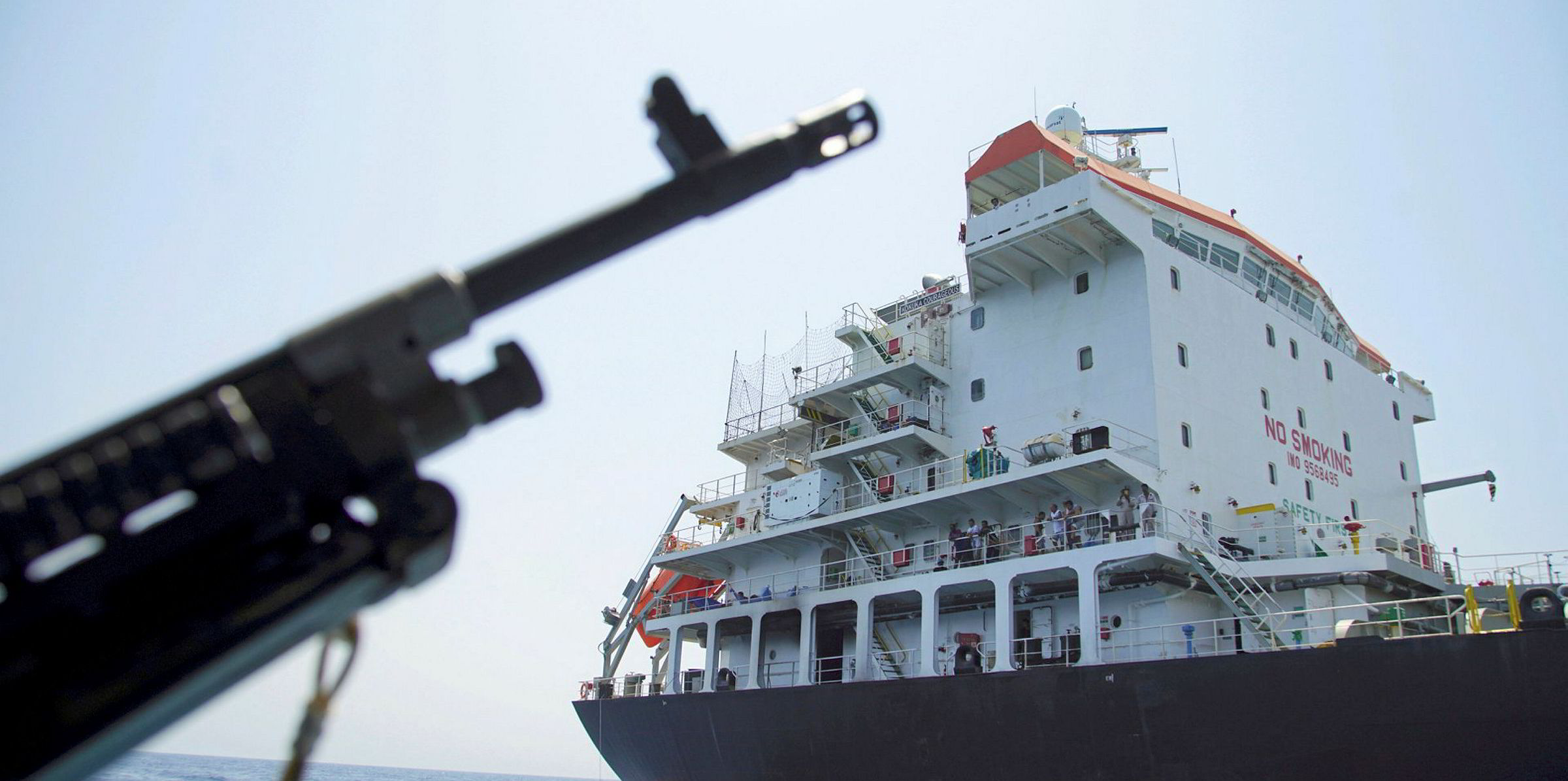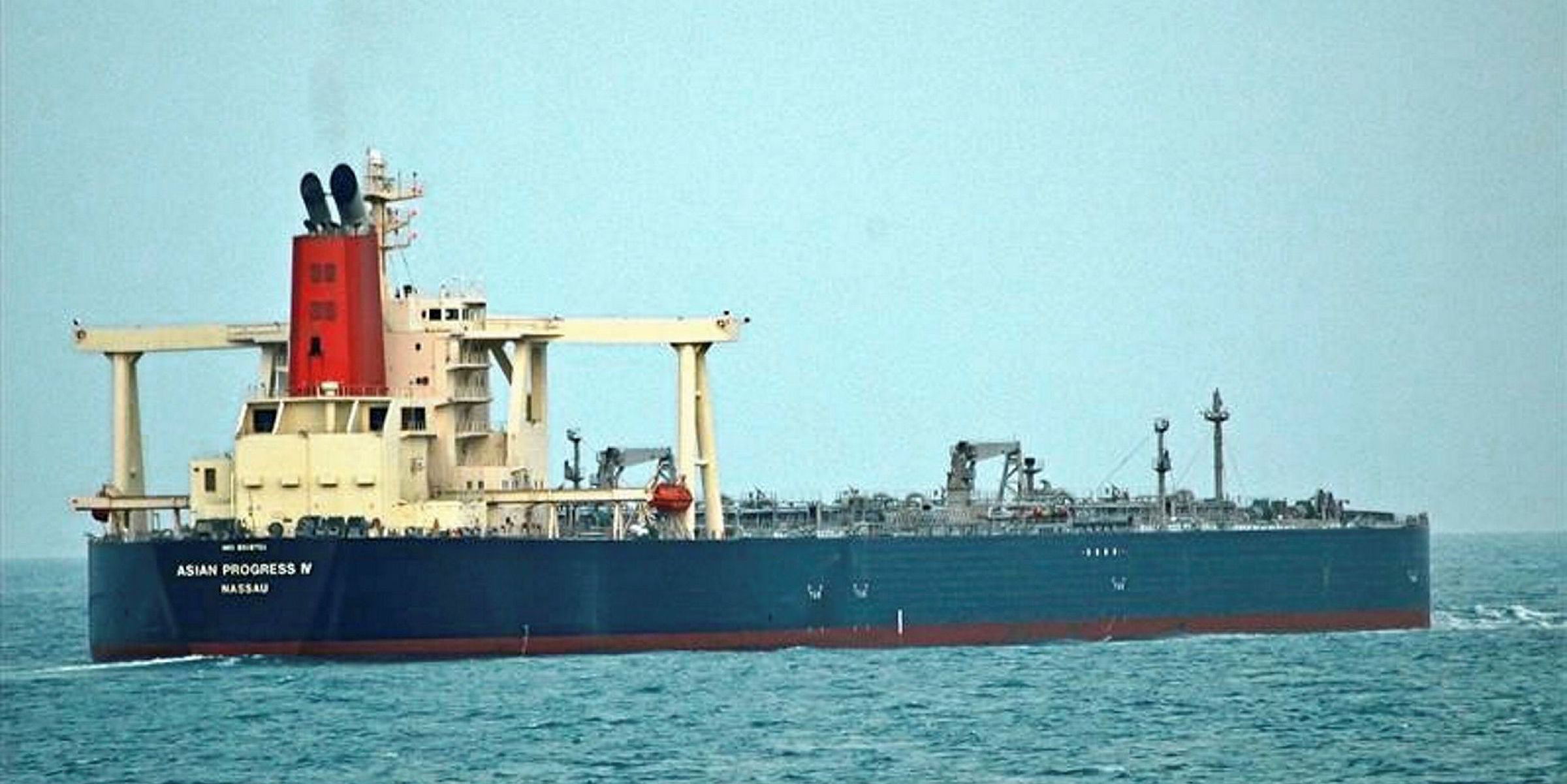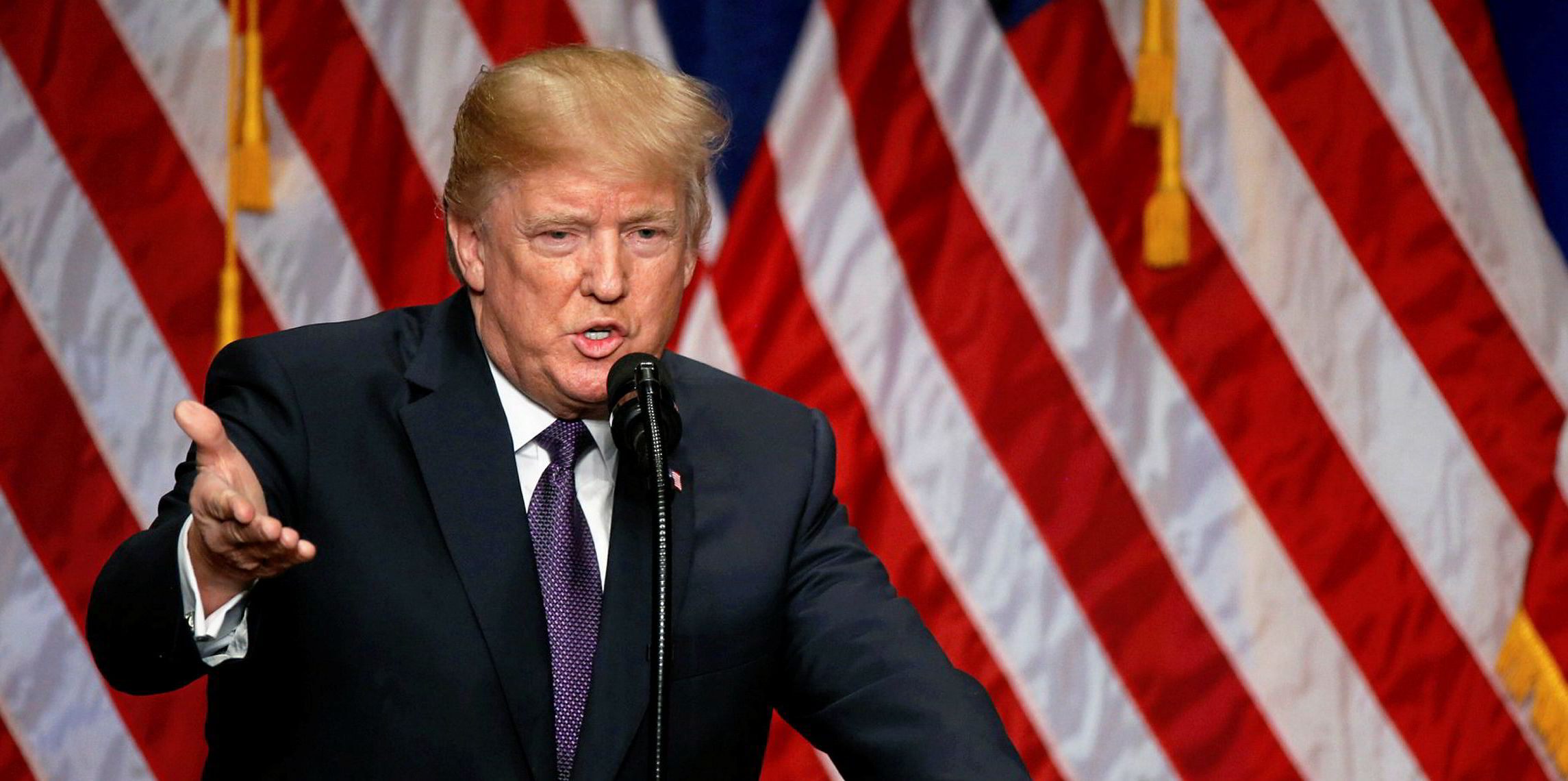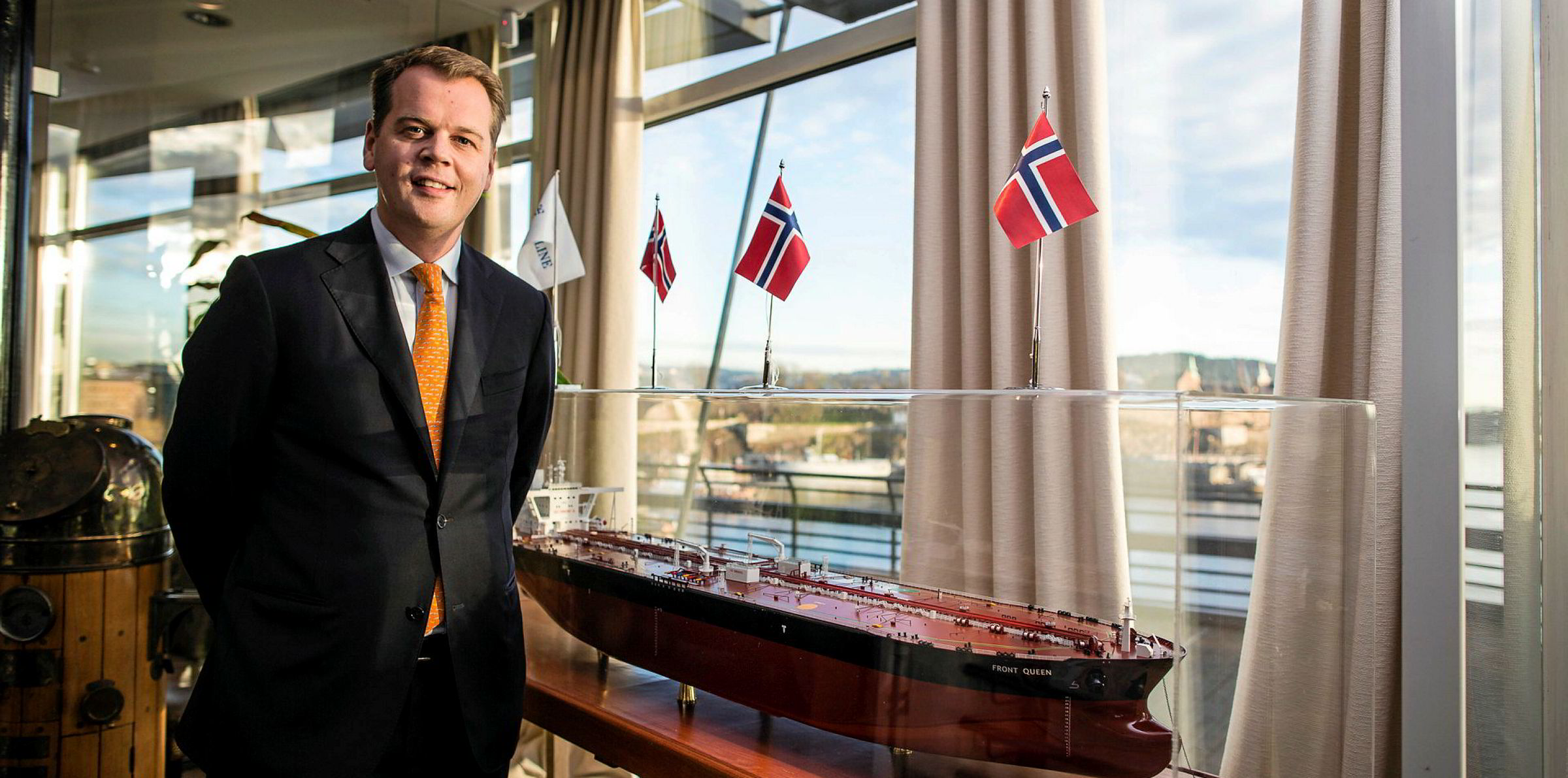Tanker owners have taken a series of precautionary measures for vessels operating in the Middle East Gulf amid heightened geopolitical tension after the attacks on two ships on Thursday last week.
However, having spoken with more than 10 tanker owners, operators and brokers, TradeWinds found that few market players have stopped trading outright in what is one of the world’s most important oil shipping lanes.
Instead, tanker companies are seeking to limit their exposure to Middle East trade, assessing the operating environment day by day as the geopolitical situation evolves.
Reducing exposure
"We have told our ships to sail at least 12 nautical miles radius away from where the two tankers were attacked,” said MOL, which VesselsValue ranks as the eighth-largest crude tanker operator in the region.
“In addition, we have increased watch onboard.”
The company told TradeWinds in an emailed statement that it is constantly monitoring from shore.
As TradeWinds has reported extensively, the 110,000-dwt LR2 product tanker Front Altair (built 2016) and 27,000-dwt handysize Kokuka Courageous (built 2010) were attacked in the Gulf of Oman following four similar incidents in nearby waters last month.

Since last Thursday, the number of vessels operating at any given time offshore of Fujairah has remained steady at 150, according to Windward, a maritime risk-focused data analysis firm.
However, the average anchoring time for ships has dropped from 32 hours in the first five months of 2019 to less than 22 hours after.
“In other words, shipowners and captains are actively reducing their exposure to the region, while maintaining the same scope of trade," the company said.
| Owner | Number of ships |
| China VLCC | 45 |
| Cosco Shipping Energy Transportation | 45 |
| Bahri | 43 |
| Maran Tankers | 43 |
| NITC | 41 |
| Dynacom Tankers | 35 |
| MOL | 31 |
| Euronav | 31 |
| DHT Holdings | 24 |
| SCI | 18 |
| Others | 644 |
Source: VesselsValue
Among other major operators, Maersk Tankers said its operations are not affected by the incident in the Gulf of Oman.
“We are monitoring the situation closely and will take precautionary actions," the company said.
Common sense
Stolt-Nielsen said it has enhanced security on its vessels due to call in the area and, meanwhile, is also watching for further developments closely.
Of the precautions, a major Greek VLCC owner operating in the region said operators are taking basic, common-sense measures, such as increasing sentries and lighting surrounding the bow area. They are also blowing inert gas into tanks as a safety measure against explosions.
Hong Kong’s Wah Kwong Maritime Transport Holdings has one VLCC that has just passed through the attack zone and another on its way.
Chief executive David Palmer said the company is keeping in close contact with its ships after the 13 June recommendations of Bimco to members, which included increased night patrols, more diligent watchkeeping, having all sleeping quarters above the waterline and keeping all watertight doors closed.
"We've also been maintaining a close dialogue with our insurance provider," Palmer said. "It's not a commercial issue, so our concern is with the safety of our crews and our ships."
| Owner | Number of ships |
| Torm | 29 |
| Hafnia | 27 |
| Scorpio Tankers | 22 |
| Bahri Chemicals | 22 |
| UACC | 19 |
| Sinokor | 16 |
| Maersk Tankers | 16 |
| Prime Tanker Management | 13 |
| Ocean Tankers | 13 |
| COSCO Shipping Energy Transportation | 13 |
| Others | 529 |
Source: VesselsValue
AIS data indicates that Wah Kwong's 318,700-dwt Hong Kong Spirit (built 2012) departed Ras Tanura on 14 June and passed Fujairah the next day, and that the 296,700-dwt Trikwong Venture (built 2012) is off India bound for the Middle East Gulf. Both sail in Navig8's VL8 pool.
Slow activity
Having blamed Iran for the attacks, the US has pledged to use its growing naval force in the region to ensure passage through the Strait of Hormuz. Industry estimates suggest 30% to 40% of the world’s seaborne crude trade uses the waterway.
Tehran has denied any involvement but there are mounting concerns over a potential escalation of geopolitical tension in the Middle East, leading to higher
insurance premiums related to war risks.Several brokers reported limited physical fixtures for much of the past week, even though VLCC earnings were spiking in the forward freight agreement market.
While a limited number of owners managed to push up freight rates significantly, charterers were slow in finalising their July loading programmes with lacklustre refining margins curbing crude demand, according to some market participants.
Paying a premium
One Greek shipowner described feeling a general sense of uncertainty for future developments that had led to much business activity being down to a minimum.
"Everybody's still like frozen, in a wait-and-see mode," the owner said.
However, another Greek owner did not share the view that spot trading in the area was reduced: "Stems are still fixed, there has been no let up."
In any case, the general expectation is that charterers will eventually return in the next few weeks, unless large-scale military conflicts break out in the region.
Even with more insurance premiums, overall freight rates remain tolerable as tanker earnings are at low levels.
“Paying for risk premiums under this circumstance ... is not unreasonable,” a major Asian charterer said.
Harry Papachristou, Bob Rust, Holly Birkett, Irene Ang,
Adam Corbett and Andy Pierce contributed to this story





